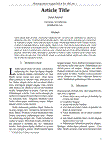| Sumario: | During the past three decades, enormous efforts have been made to develop microdiets (MD) to replace live feed,both rotifers and Artemia, as complete or partial replacements for marine fish larvae. However, although, there weresubstantial achievements in reducing the reliance on live feeds and weaning the larvae earlier onto MD, still, in mostspecies, MD cannot completely replace live feeds.There are several reasons why MD cannot, at this stage, completely replace live feed. Nutritional profile for marinefish larvae is yet to be completely defined. Although lipids and fatty acid requirements are known (to a degree), verylittle work was carried out to define the protein / amino acids, mineral and vitamins.Chemical and physical properties are playing a crucial role with the behaviour of MD particle in the water,attractability, leaching, ingestion and ingestion in the larvae gut. However, very little attention was giving to theseissues.
|
|---|
